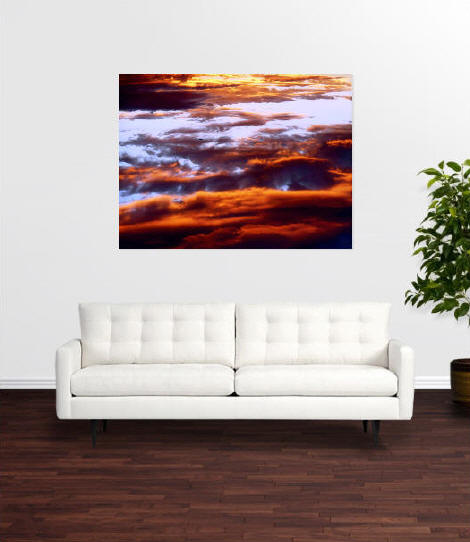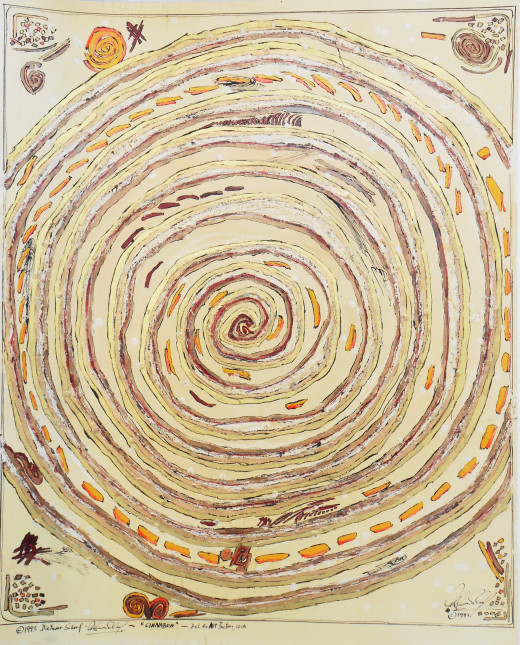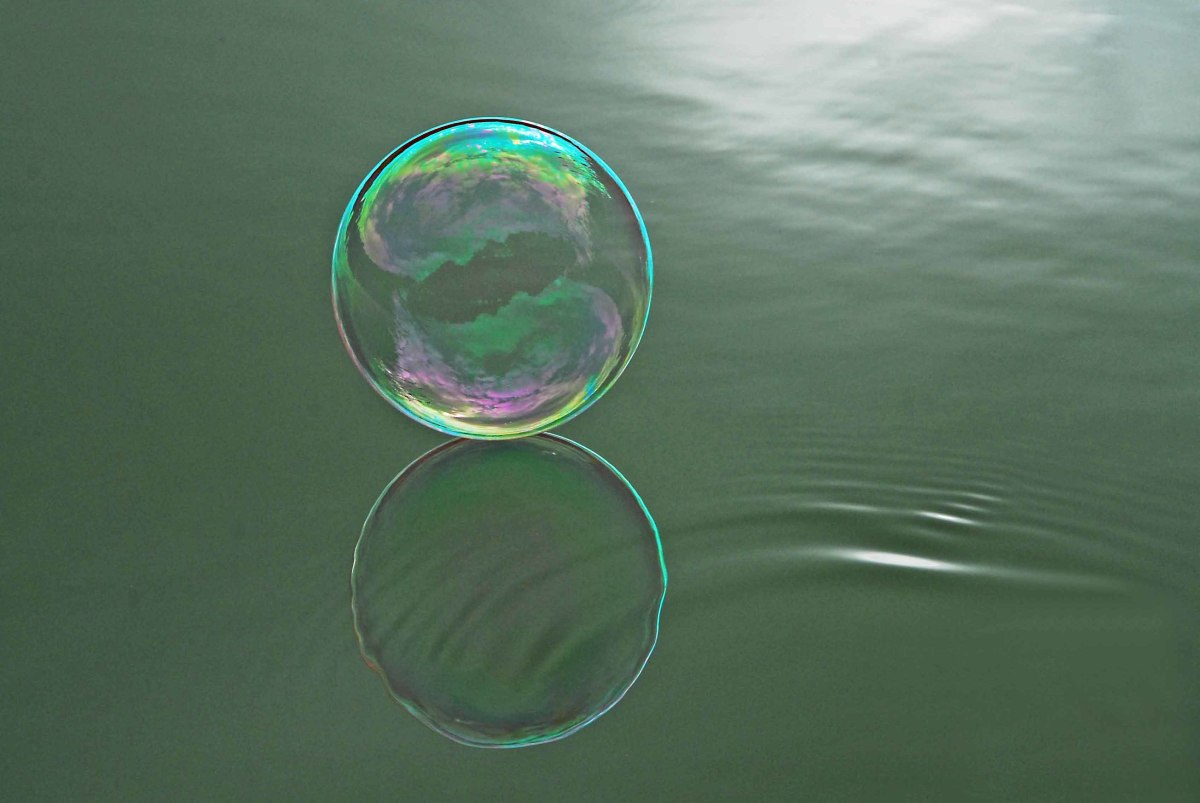- HubPages»
- Home and Garden»
- Home Decorating»
- Wall Decor & Artworks
Criteria for Canvas Fine Art Print Masterpieces

The Desire for the Perfect Reproduction
From the beginning of time it has been an ambition of most artists to replicate their work. Artists became very creative to accomplish the task of reproduction. With the advances in technology we're now at a place where at least images can be reproduced perfectly. The only thing lacking is e.g. the structure like brush strokes in an oil painting. In our recent article "Fine Art Acrylic (Plexiglass) Prints - Part 1" we briefly mentioned the Artagraph print technology from the 90's. This print technology used a rubber-like gel application on the surface to simulate the characteristics of an oil painting. But the process was complicated and expensive.
Today, the alternative to reproductions created by hand or through some innovative print technologies is found in high-quality canvas prints. True, the structure of brush strokes, wax applications, etc. is not replicated in the Giclée printing process, but an image can be accurately copied in an unlimited number. With such perfect image reproductions on canvas, a talented artist can do miracles to work over such a print to simulate the feel and look of an original artwork. The average viewer of an artwork will have a very hard time to distinguish the original from such an elaborate high-quality reproduction.
In fact, artists who reproduce their artworks as Limited Edition paintings will go to great length to work over each copy to make it look like the original. They for instance use the same paints and brushes which they used to create the original. The more labor intensive such copies are and depending on the name recognition of the artist and the total number of the Limited Edition, the price for such reproduction pieces can be a high multiple of just regular canvas fine art prints.

Professional landscape photographers prefer Acrylic vs. Canvas
While canvas prints were a hot item when those first came out, as canvas prints by appearance were a lot more exciting than the good old paper prints, most professional landscape photographers have opted for Acrylic prints over time. Acrylic prints, either with direct printing on the back of the acrylic or via face mounting, just have a lot more vibrancy than a canvas print. Due to the structure of the canvas fabric an image will usually appear kind of dull. Therefore, most landscape photographers such as Peter Lik, Bobby Wheat and most others will offer their photographs only on acrylic.
The newest medium for reproductions is aluminum which we covered here in our article "Aluminum Fine Art Prints". Based on various comparisons, the author of this article is very much in favor of aluminum fine art prints vs. other media. BTW, yours truly is offering virtually all his art photographs for the Limited Editions as well as reproductions of his original artworks on all generally accepted media from aluminum to acrylic to canvas, and the open editions are also offered on different types of fine art papers.
Nevertheless, a professional high-end canvas print can most definitely become a fine art masterpiece, especially for portrait and landscape photographs. And wedding photographers will always offer the canvas print as the ultimate capture of that memorable day.
Crucial Criteria for the Canvas Print Masterpiece
The key components to making a canvas print a true fine art print masterpiece is the basic material used as well as the Giclée printing process, meaning the type of equipment used to produce the reproduction. Recently, in order to save money, some big box retailer have been offering photo prints on canvas-like paper. Needless to say that we're not taking this medium into consideration. Instead, the canvas should be a thick 20.5 mil canvas which is usually made of a poly-cotton blend.
The next key element is the printing process. Big box retailers including office shops do not have the equipment to produce high-end canvas prints. There's a big difference in the results of the various printers and only the best Giclée printers in the world will use the high-end equipment needed to produce canvas fine art masterpieces. The print results based on the equipment alone can be like day and night. For a true canvas fine art print masterpiece only the best material and the best printer will do.
Also, the finishing of the canvas print is a crucial element. A protective scratch-resistant UV laminate will ensure that the image will look fresh and sharp for a very long time. In fact, all the quality components from the canvas to the inks and to the laminate will guarantee that such a canvas fine art print will not fade for at least 100 years.
The next step in making it a masterpiece are the support (stretcher) bars. In an effort to safe money most photographers and artists forget about this little detail. They usually use 1.5" inch stretcher bars of perhaps even thin 0.75" inch stretcher bars. To achieve gallery and museum quality only stretcher bars of 2.5" inches will do.
Whenever an artwork is framed then the thickness of the stretcher bars are not that important, but still the little detail of the thicker stretcher bars will add to the appearance of the canvas fine art print as a masterpiece. Sure, in our time and age the Gallery Wrap has become a popular item and may look a bit overwhelming with the thick stretcher bars. But then someone can always opt for the Museum Wrap and that alleviates the concern regarding the Gallery Wrap finish.

Quick Note about the difference between Gallery Wrap and Museum Wrap
A Gallery Wrap is when the image is stretched over the stretcher bars and therefore the image is visible on the sides and it may look extended. There are digital techniques which some printers offer to superficially "stretch" the image or to present an illusion thereof so that the actual full-size image is still on the surface of the canvas.
The Museum Wrap is when the canvas is stretched over the stretcher bars but the full-size images remains on the surface of the artwork and the sides are painted black or white or in another color. What wrap looks best is purely based on taste and either wrap is a great option if no frame is desired to present the artwork as a finished product. For the professional canvas fine art print masterpiece we prefer the Museum Wrap with black edges.

The Artist's Touch
As mentioned above, some artists go to great length to enhance their canvas fine art prints to make them look like the original artwork. Then of course it may no longer be just a canvas print, but instead it's a new art creation and it can become an original. This is usually suitable for artworks based on original paintings.
But not so for photographs as photographs don't have structure like brush strokes, wax applications, etc. Sure, an art photographer may want to utilize the canvas print to create an exceptional piece of fine art as he/she work over the canvas to create something special. But then depending on the work done over the printed canvas it too may become an original artwork rather than a reproduction.
In times gone by when poor artists--and most of them were poor--needed a canvas to create a new painting, they usually used an old worthless painting to cover it first with black paint. After that process they started out with a totally black canvas to create their new painting. This black canvas base usually made the colors pop and allow for precise black lines. It's actually a very cool technique and it can change the outcome of a painting significantly.
Most photographs including art photographs will be reproduced on paper or for the more expensive look on aluminum or acrylic. (Note: when we talk about acrylic we don't talk about acrylic paint but instead we're talking about the plexiglass-like material called acrylic).

Conclusion and Final Thoughts
Bottom line: Canvas fine art prints can become true masterpieces of fine art, although realizing that these are just copies of an original. In photography it's simply a photograph reproduced on canvas. The key components in making a canvas print an exceptional piece of fine art are (a) the high-quality archival canvas used, (b) the Giclée printing process with the pertaining inks on (c) the best high-end equipment available, (d) the laminating process for protecting the print, and then (e) the often overlooked finishing touch of thick 2.5" stretcher bars.
The cost for such high quality canvas fine art prints is significantly higher than most other media except for acrylic prints which depending on size can be higher in manufacturing costs than a canvas print. In general terms, canvas prints as well as acrylic prints have similar manufacturing expenses. The good thing though is that today we have POD (Printing-On-Demand) and this reduces the financial risk for the artist or art publisher significantly as artworks don't need to be ordered in bulk to cover initial setup costs like in the past.
Another consideration is the sensitivity of canvas vs. e.g. aluminum or acrylic. Even with a strong canvas and a laminate finish, a canvas can still be ripped and needs to be handled with special care. But then acrylic when dropped can chip on the edges and a sharp object can scratch the acrylic surface. Both canvas prints on stretcher bars and acrylic prints are quite heavy with aluminum being the lightweight alternative. Again, aluminum seems to be the most durable and least sensible medium, although aluminum too can be damaged if abused. In any case, every artwork on any medium has to be handled with care.
Although print technologies have come a long way, the colors on a canvas print just don't pop as much as on e.g. a glossy aluminum or acrylic print. A benefit of the canvas fine art print is that it can be placed virtually anywhere in a room as it won't have the problem with reflections like the glossy aluminum or acrylic prints do when hit directly with a light source. So this makes placement a bit easier for canvas fine art prints.
If a choice is available which medium to use for an artwork, it may also depend on the overall decor. A canvas fine art print will always look phenomenal in a classy Victorian decor or similar. In a more contemporary setting the aluminum and acrylic fine art prints will often make for a far better choice vs. the canvas fine art print, especially when it is pertaining to photographs. But for paintings and painting reproductions a high-quality canvas fine art print will most likely be the predominant choice also for interiors with a contemporary touch.

© 2014 Dietmar Scherf







